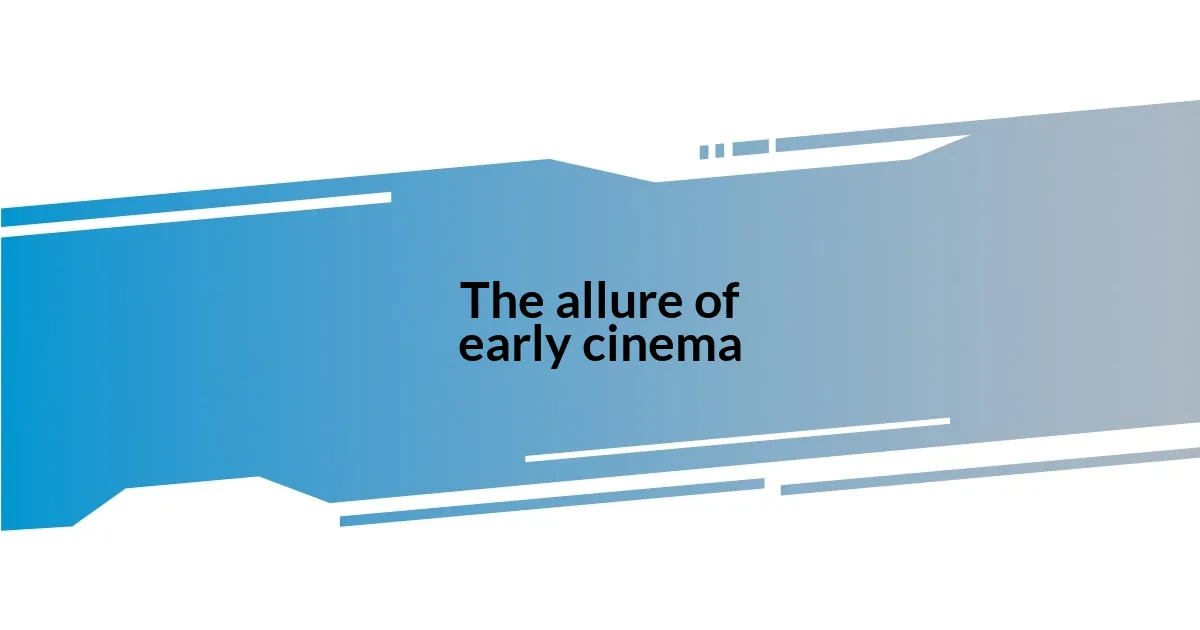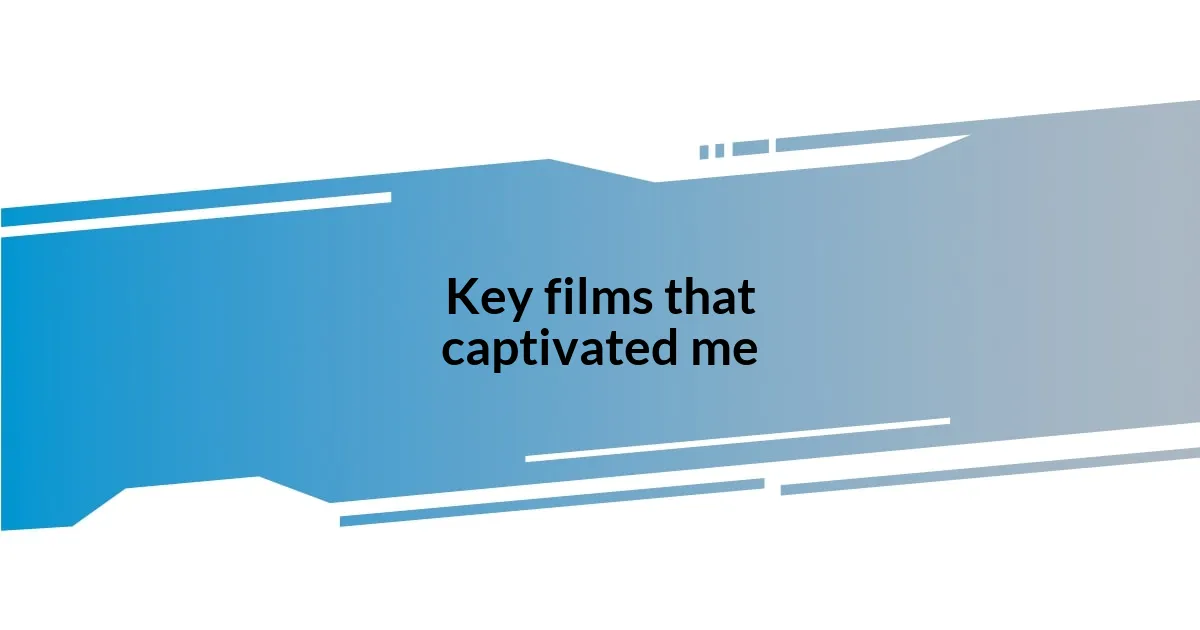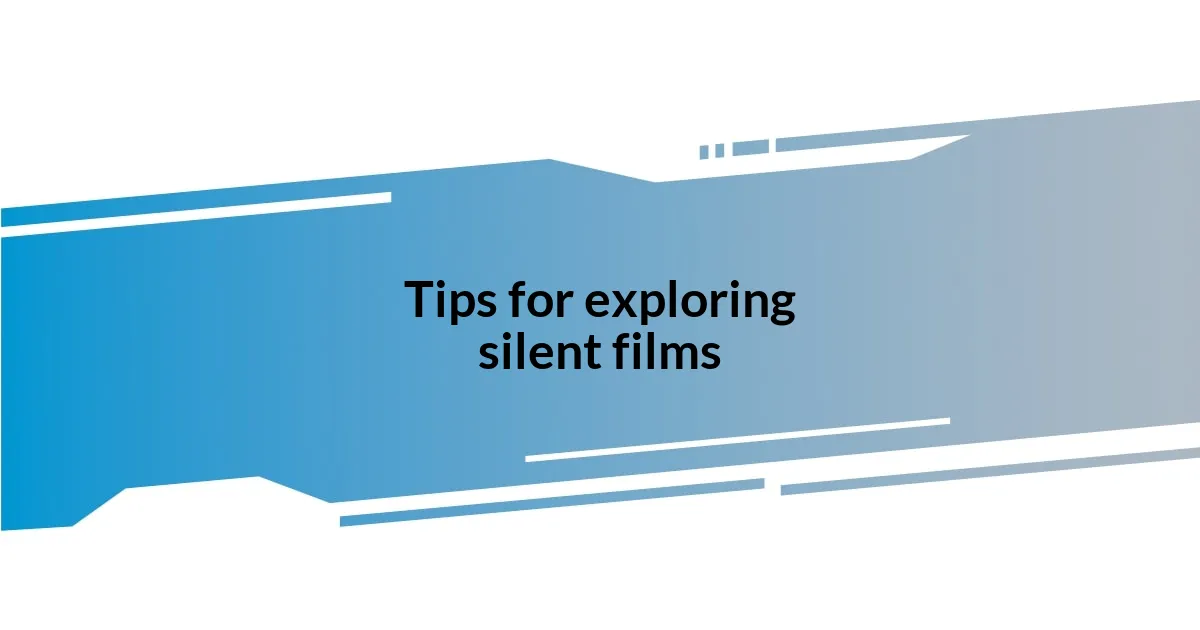Key takeaways:
- The allure of early cinema lies in its powerful non-verbal storytelling and emotional depth, exemplified by silent films like “The Kid” and “City Lights.”
- Key silent films that captivated the author include “Metropolis,” “Nosferatu,” and “Sunrise: A Song of Two Humans,” each showcasing unique artistic elements and themes.
- Create an immersive viewing experience by dimming lights and focusing on music, which enhances emotional responses during silent films.
- Watching silent films with others fosters a richer communal experience, prompting discussion and deeper reflection on the narratives presented.

The allure of early cinema
There’s something undeniably captivating about early cinema that draws me in every time I hit play on a silent film. The absence of dialogue creates a unique experience, where every facial expression and gesture serves as a powerful tool for storytelling. Have you ever found yourself reading the emotions etched across a silent actor’s face, feeling as though they’re sharing their secrets directly with you?
I can vividly recall the first time I watched a Charlie Chaplin film. It was a chilly evening, and as I settled in, the flickering images transported me to a different world. The blend of humor with poignant moments in “The Kid” made me laugh and then brought a tear to my eye, all without a word spoken. How incredible is it that such profound feelings can emerge from simple visuals and music?
The allure of these films lies not just in nostalgia but in their artistry. The way scenes are crafted, using light and shadow, pulls me deeper into the narrative. It begs the question: in our modern, fast-paced world filled with constant spoken dialogue, can we still find beauty in the unspoken? I believe we can. There’s a sense of intimacy in watching these films, as if they invite us to engage more than we do with contemporary cinema.

Key films that captivated me
One film that truly left a lasting impression on me is “City Lights.” The moment Chaplin’s Tramp attempts to woo a blind flower girl, I felt my heart race with hope and despair. I found myself lost in the tenderness of their interaction, unable to suppress a smile as he fumbled through his clumsy efforts at romance. The film’s ability to weave comedy and vulnerability together completely captivated me, leaving me reflecting on my own experiences with love and longing.
Here are some key films that captivated me:
- “The Kid” (1921): Chaplin’s mix of humor and heartbreak was a revelation, showing the depth of emotions possible even without dialogue.
- “Metropolis” (1927): The stunning visuals and striking commentary on society’s class divide made me rethink our modern dilemmas.
- “Nosferatu” (1922): The eerie atmosphere and Max Schreck’s haunting portrayal of Count Orlok pulled me into a world of chilling suspense.
- “Sunrise: A Song of Two Humans” (1927): This film’s beautiful cinematography and poetic storytelling left me entranced, experiencing a whirlwind of emotions throughout its runtime.

Tips for exploring silent films
When exploring silent films, finding the right environment can truly enhance the experience. I remember the first time I dimmed the lights and snuggled into my favorite chair, transforming my living room into a little cinema. That simple change made the flickering images on the screen feel more magical, almost like stepping back in time. Have you tried creating your own cinema-like atmosphere? I highly recommend it—your viewing experience will elevate significantly.
Another tip is to pay close attention to the music that accompanies silent films. I often find that the score can evoke an emotional response even before the story unfolds. For instance, during a recent viewing of “The Cabinet of Dr. Caligari,” the haunting piano added layers of tension that the visuals alone couldn’t convey. It makes me wonder: how often do we overlook the soundscapes that shape our emotional responses? Engaging with the films’ scores is like unlocking another dimension of storytelling.
Lastly, consider watching films with a friend or group. Sharing laughter or gasps in real-time creates a collective experience that enriches the narrative. I recall hosting a silent film night with friends; we ended up discussing the themes and performances long after the credits rolled. It turned a simple movie night into a vibrant conversation about art, emotion, and our own lives. Think about how different your viewings might become if you included others in your silent film journey!
